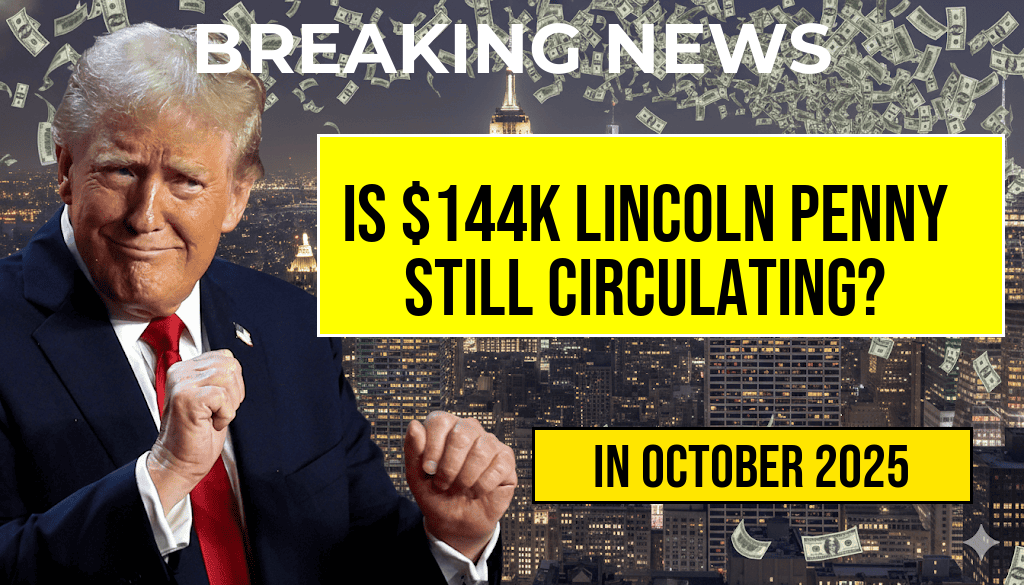The $144,000 Lincoln Wheat Penny has become a topic of fascination among numismatists and casual collectors alike. This penny, originally minted in 1943, gained notoriety not just for its rarity but for its staggering valuation, which can reach up to $144,000 at auction. As collectors scour through their change and sift through bags of pennies, many are left wondering if this valuable coin is still in circulation, or if it has long since been retired from everyday use. Understanding the background of this particular penny, its significance in the numismatic community, and the current state of circulation can provide clarity to those intrigued by this unique piece of American history.
The Origins of the Lincoln Wheat Penny
The Lincoln Wheat Penny was first introduced in 1909 to commemorate the 100th anniversary of President Abraham Lincoln’s birth. The reverse side of the coin features two ears of wheat, which is how it got its name. However, the 1943 variant is especially notable because it was minted during World War II when copper was needed for the war effort. As a result, the U.S. Mint produced pennies made of zinc-coated steel instead.
The 1943 Copper Penny
Among the 1943 pennies, a small number were accidentally struck on copper planchets that were leftover from the previous year. This error resulted in the creation of the highly coveted 1943 copper penny, which has become a prized possession for collectors. The rarity of these coins, with only a handful known to exist, has led to astronomical prices at auctions, with one selling for $144,000 in 2010.
Current Status of the Lincoln Wheat Penny
While the 1943 copper penny remains a collector’s item, the question persists: Is it still in circulation? The answer is nuanced. Most of the 1943 copper pennies have been removed from circulation due to their value and rarity, but it is theoretically possible that a few could still be found in circulation today. However, this is highly unlikely.
Valuation and Market Trends
The value of the Lincoln Wheat Penny can vary significantly based on its condition and mint mark. Coins in uncirculated condition or with unique features tend to fetch higher prices. For example, a 1943 copper penny in excellent condition can command a price upwards of $100,000, while those in less favorable conditions may still sell for thousands. The following table summarizes the estimated values of various conditions of this penny:
| Condition | Estimated Value |
|---|---|
| Good | $10,000+ |
| Fine | $30,000+ |
| Very Fine | $60,000+ |
| Uncirculated | $144,000+ |
Finding a Lincoln Wheat Penny
For those on the hunt for this elusive coin, there are a few methods that collectors employ to increase their chances of finding a Lincoln Wheat Penny. Some of these include:
- Searching through rolls of pennies at banks.
- Checking coin collections from relatives or estate sales.
- Participating in local coin shows or auctions.
Tips for Collectors
Experienced collectors often recommend being aware of the coin’s mint marks and understanding grading systems to accurately assess value. Additionally, joining online forums and communities can provide valuable insights and tips from fellow enthusiasts.
Conclusion
While it remains unlikely that the $144,000 Lincoln Wheat Penny is still circulating, the allure of finding such a rare coin continues to captivate collectors. The combination of historic significance, rarity, and potential value ensures that the 1943 copper penny will remain a talking point in the world of numismatics for years to come. For additional information on coin collecting and resources, visit Wikipedia or Forbes.
Frequently Asked Questions
Is the $144K Lincoln Wheat Penny still in circulation?
No, the $144K Lincoln Wheat Penny is not currently in circulation. Most of these rare coins are held by collectors and investors.
What makes the Lincoln Wheat Penny valuable?
The value of the Lincoln Wheat Penny comes from its rarity, demand among collectors, and specific features, such as mint errors or limited production years.
How can I identify a valuable Lincoln Wheat Penny?
You can identify a valuable Lincoln Wheat Penny by examining its date, mint mark, and any unique characteristics, such as die errors or unusual wear.
What should I do if I find a Lincoln Wheat Penny?
If you find a Lincoln Wheat Penny, check its condition and date. Consider consulting a coin expert or appraiser to determine its potential value.
Are there other valuable pennies to look out for?
Yes, besides the Lincoln Wheat Penny, collectors often seek out rare Lincoln Memorial Pennies and other historical coins that may also have significant value.











